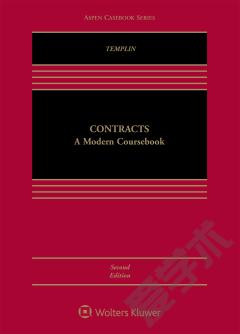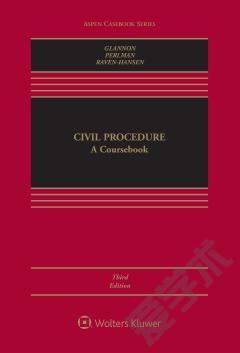Contracts —— A Modern Coursebook
----- 合同:现代课程
This file contains two sample chapters from a new law school casebook titled Contracts: A Modern Coursebook. This casebook is part of a growing trend to modernize the way in which law students are taught, and it is different from the traditional casebook. With most casebooks, students learn the law by extracting the rules out of the case and then organizing the rules into an outline. Although effective, the traditional method is inefficient and can be misleading since no single case can properly summarize the complexity of the law. The modern approach is more similar to the way attorneys actually learn the law. Students first read an explanation of the rulesâa summary that illustrates the scope and parameters of the law. After students have a foundation in understanding the rules, they then read the cases. The real worth of reading cases is to learn how courts reason through a legal problem. If students understand the rule before reading the case, they can focus more on learning how to think like a lawyer. The book has the following structure to incorporate modern pedagogy to encourage active learning and increase student engagement: Learning Objectives: Each chapter starts with concise statements of what students are expected to know and be able to do after completing the materials. Explanations of the Law: A clear explanation of the rules helps students build mastery of the law before reading the cases. Within this explanation, sections are some recurring elements including: Rule Statements. The primary rules are presented in a box, making it easier to refer back to the rule as students read the explanations. Examples. Rules are illustrated with examples, providing guidance on different outcomes given a certain set of facts. Case Illustrations. Cases pertinent to the rule at issue are presented as short synopses. Test Yourself. Questions are embedded within the explanation section so that you can test your understanding of the principles. The answers are contained in the appendix. Case Law: The Case Law section contains a mix of classic contracts cases as well as more timely and topical cases that illustrate the principles discussed in the chapter. Each case contains questions that act as prompts to help students understand the court's reasoning. Key Concepts: The key concepts needed to achieve the learning objectives are listed near the end of the chapter. This allows students to check their understanding of the material before moving onto the Problem Solving and Analysis section. Problem Solving and Analysis: The Problem Solving and Analysis section provide an opportunity to build critical thinking skills through a series of thought-provoking hypotheticals that are typically based on real-world scenarios. These problems also let students assess whether they have achieved the learning objectives defined at the beginning of the chapter.
{{comment.content}}








 京公网安备 11010802027623号
京公网安备 11010802027623号